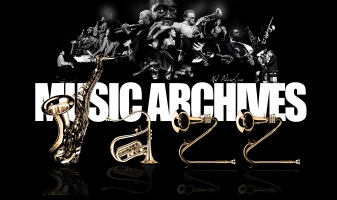
 |
Best Jazz Albums of 2021 (by The New York Times) |
Post Reply 
|
| Author | |
snobb 
Forum Admin Group 

Site Admin Joined: 22 Dec 2010 Location: Vilnius Status: Offline Points: 30601 |
 Post Options Post Options
 Thanks(0) Thanks(0)
 Quote Quote  Reply Reply
 Topic: Best Jazz Albums of 2021 (by The New York Times) Topic: Best Jazz Albums of 2021 (by The New York Times)Posted: 06 Dec 2021 at 5:33am |
1. Floating Points, Pharoah Sanders and the London Symphony Orchestra, ‘Promises’Why fight it: This year’s big talker in the experimental-music world ended up being just as powerful as we’d hoped. Not really jazz, not exactly classical, definitely not electronic music per se, “Promises” is the first-ever collaboration between Pharoah Sanders, the octogenarian spiritual-jazz eminence, and Floating Points, nee Sam Shepherd, a 30-something British composer and polymath. They each use music to get at questions of healing — Shepherd typically as a solo musician, Sanders as a communitarian — and although “Promises” was recorded before the coronavirus pandemic began, it arrived a year into lockdown, just when we needed it most. 2. Jason Moran, ‘The Sound Will Tell You’A pianist, visual artist, curator, writer and guiding force in jazz, Jason Moran has been quietly releasing albums on his Bandcamp over the past few years, after ending a lengthy relationship with Blue Note Records. He doesn’t have a publicist, and barely self-promotes beyond his personal social media feeds, but these releases are worth seeking out. Moran recorded “The Sound Will Tell You” alone in January, just as he was mounting an exhibition of deep-blue works on paper at Luhring Augustine in Tribeca. This is an intimate and tender, harmonically lush piano record, heavily inspired by the writings of Toni Morrison, blurred occasionally by electronic effects but always clear in its melodic intent. (Listen to “The Sound Will Tell You” on Bandcamp.) 3. James Brandon Lewis Red Lily Quintet, ‘Jesup Wagon’The tenor saxophonist James Brandon Lewis tends to blow hard into his horn, but he likes to save up extra breath in the bottom of his lungs, so that his notes don’t necessarily fade, but sometimes grow louder and stronger over time. It’s a way of broadcasting patience and urgency all at once, and reminding you that he’s in control. After years of mounting buzz, Lewis cashed in his chips with “Jesup Wagon.” The album’s seven original compositions — composed for an unorthodox quintet, with the life of George Washington Carver in mind — are built around yawning, polyphonic melodies (Lewis’s saxophone intertwined with Kirk Knuffke’s cornet) and layers of rhythm stacked underneath (William Parker’s bass and guimbri, Christopher Hoffman’s cello and Chad Taylor’s drums and mbira). 4. Patricia Brennan, ‘Maquishti’Twinkling and mesmeric, the debut album from this Mexican-born, New York-based vibraphonist and marimba player mixes composed material with tracks that were improvised in the studio whole cloth. Some are retouched with echoey, scrambling effects, but none is particularly lush or layered. Moving way outside the standard language of jazz vibraphone, Patricia Brennan has created something like a landscape of vapor, full of wandering melodies lost in the fog. 5. Adam O’Farrill, ‘Visions of Your Other’Weaving, pulsing, fine-grain complexity, intense focus: They’re all at play in the trumpeter Adam O’Farrill’s tangled compositions. On “Visions of Your Other,” his third album with his quartet, Stranger Days (featuring Xavier Del Castillo on tenor saxophone, Walter Stinson on bass and Zack O’Farrill on drums), the group slips into the music like a perfectly tailored suit.
6. Sam Gendel and Sam Wilkes, ‘Music for Saxofone & Bass Guitar More Songs’Sam Gendel, a saxophonist, and Sam Wilkes, a bassist, are millennial pals who seem equally interested in using music for the purposes of comfort and disruption. In 2018, they put out “Music for Saxofone and Bass Guitar,” a stealthy little album that might have spluttered out of a vat where time, space, genre and the titular instruments themselves had all melted down into a roux. Recorded live to tape and released on Bandcamp, it became an underground obsession. Their follow-up LP, “More Songs,” contains nine additional tracks in the same vein, and it’s at least as hypnotic as the first. 7. William Parker, ‘Migration of Silence Into and Out of the Tone World’The bassist, composer and organizer William Parker’s five-decade career sends a galvanizing message: Yes, you can do it all. You can play in and outside of any improvising style you choose; you can lead and you can follow; you can play the bass like a heavy rhythm instrument while coaxing grace and lyric from it. “Migration of Silence Into and Out of the Tone World” is not one new LP, but in fact 10, each featuring Parker’s original music recorded with a different collaborator or band. So it works as a measure of his enormous range, and an index of his network on the downtown avant-garde — a scene that would hardly be the same without him. 8. Sara Serpa and Emmanuel Iduma, ‘Intimate Strangers’Sara Serpa, a Portuguese singer whose voice is both small and bold, has spent the past few years immersing herself in the shocking history of Portugal’s colonial misadventures on the African continent, and responding through music. On “Intimate Strangers,” she collaborates with Emmanuel Iduma, a Nigerian memoirist and critic, who has written in evocative detail about the experiences of migrant laborers on the continent today. Through him, Serpa found a way to explore the present-day legacy of colonialism, while usefully decentering her own perspective. But the music remains distinctly Serpa’s: cool-toned, vocal-driven, abstract and yet immediately beautiful. 9. Wadada Leo Smith/Douglas R. Ewart/Mike Reed, ‘Sun Beans of Shimmering Light’Nearing 80, Wadada Leo Smith retains one of the fullest and most arresting trumpet sounds around. But playing alongside him means getting in touch with silence, too, as if there might be energy coming from his horn that hasn’t yet become sound but still needs room to breathe. The saxophonist and multi-instrumentalist Douglas R. Ewart — who, like Smith, moved to Chicago in the 1960s and became an early member of the Association for the Advancement of Creative Musicians — brings a similarly restful approach to improvisation. Working with the younger Chicagoan drummer Mike Reed, Smith and Ewart created an album of expanse and vision that lives up to its name. (Listen to “Sun Beans of Shimmering Light” on Bandcamp.) 10. Esperanza Spalding, ‘Songwrights Apothecary Lab’“Songwrights Apothecary Lab” takes the form of an album here, but it began as more than that (and it’s likely to continue as more, too). Esperanza Spalding, the bassist, vocalist and self-described “songwright,” held residencies in New York and her native Oregon during the pandemic, bringing together a mix of healers and artists in search of new and therapeutic methods of making music. Each of the LP’s 12 tracks is a “formwela,” blending lyrical and wordless vocals, instrumental textures and hooks that condense out of thin air. Edited by snobb - 06 Dec 2021 at 5:39am |
|
 |
|
Post Reply 
|
|
|
Tweet
|
| Forum Jump | Forum Permissions  You cannot post new topics in this forum You cannot reply to topics in this forum You cannot delete your posts in this forum You cannot edit your posts in this forum You cannot create polls in this forum You cannot vote in polls in this forum |